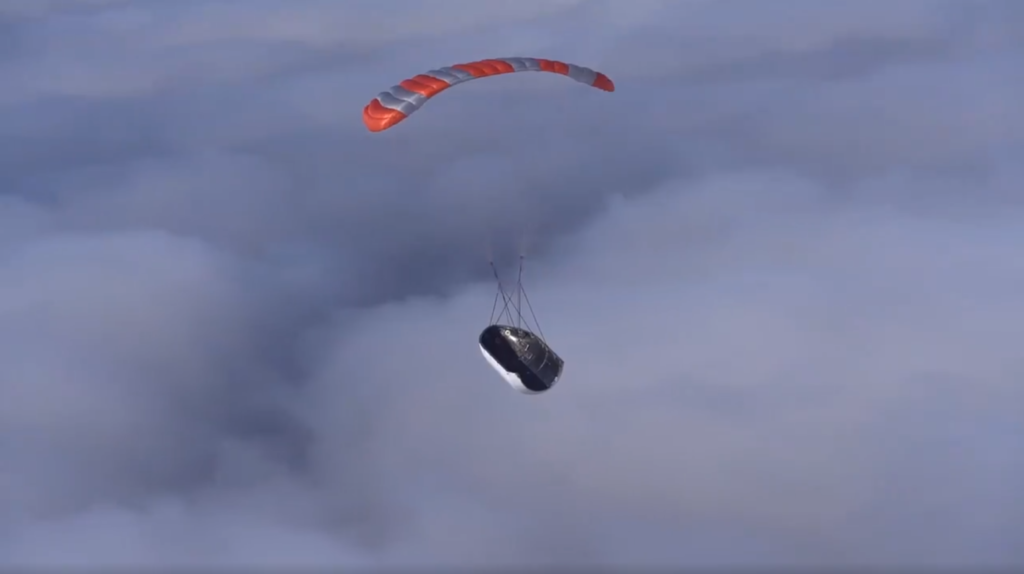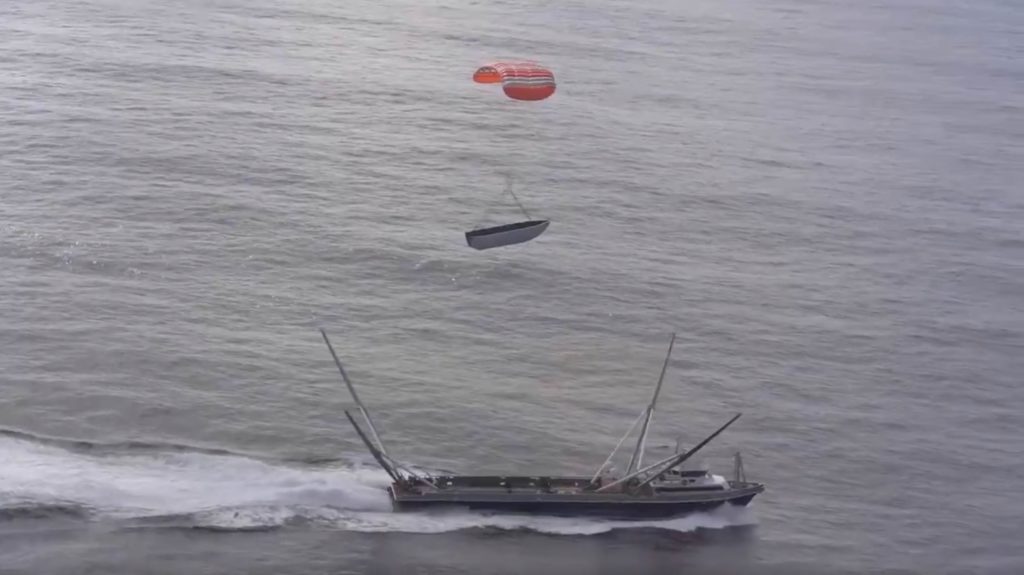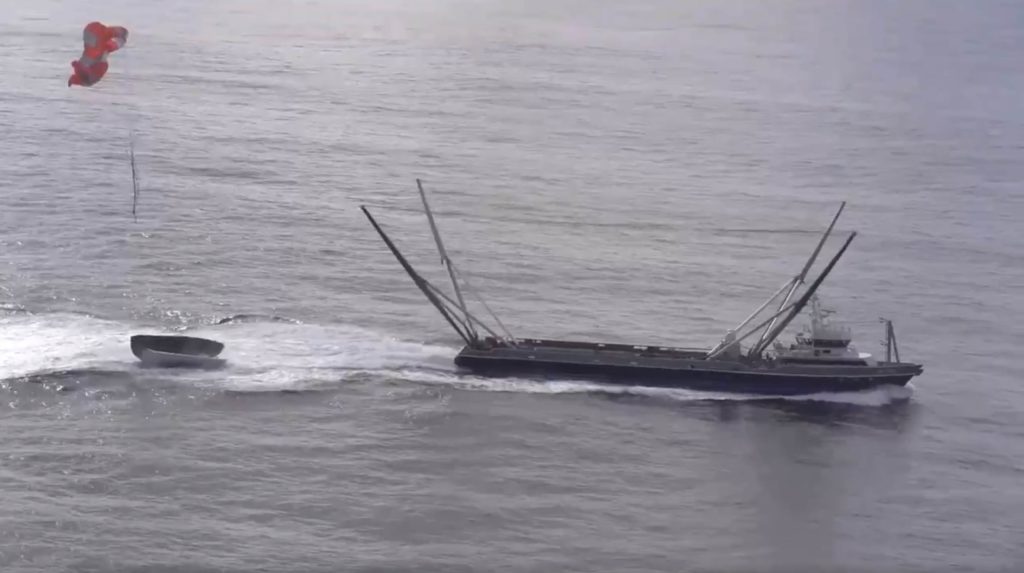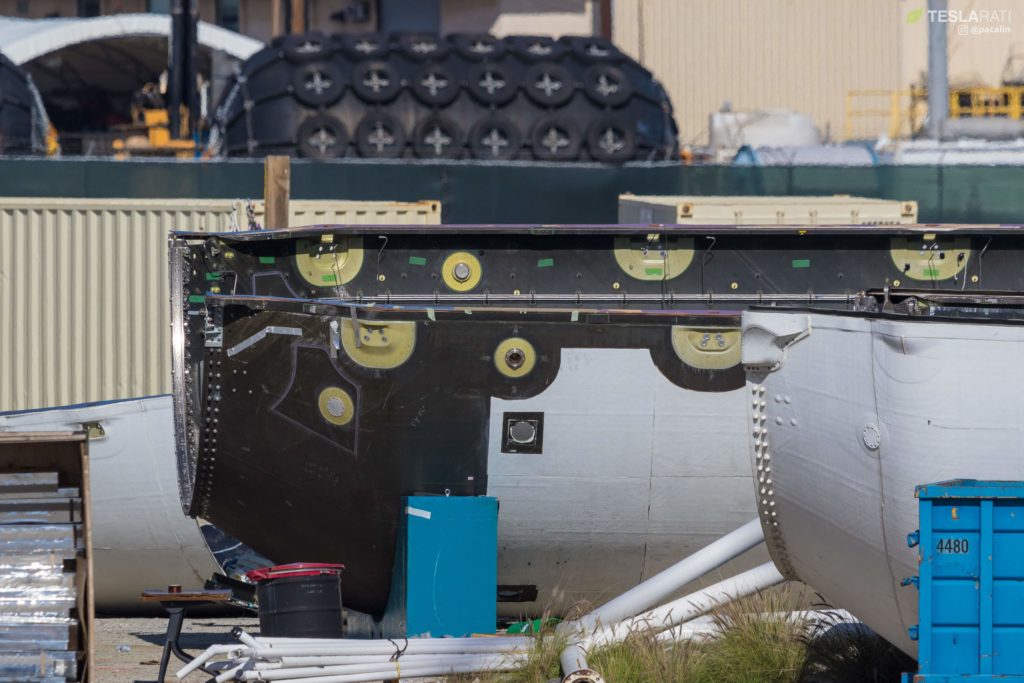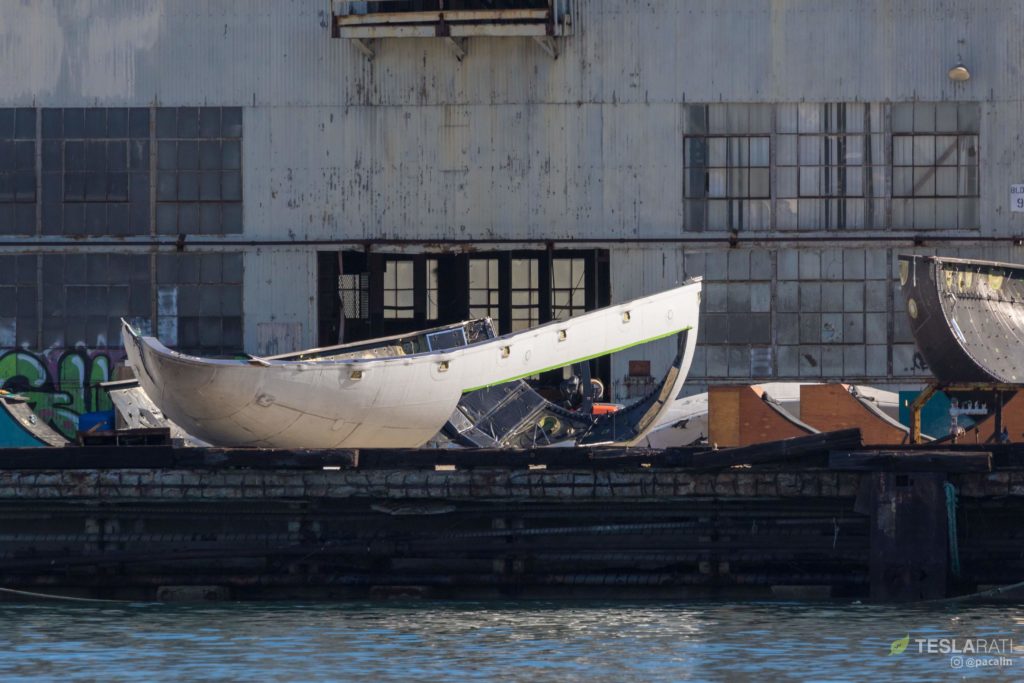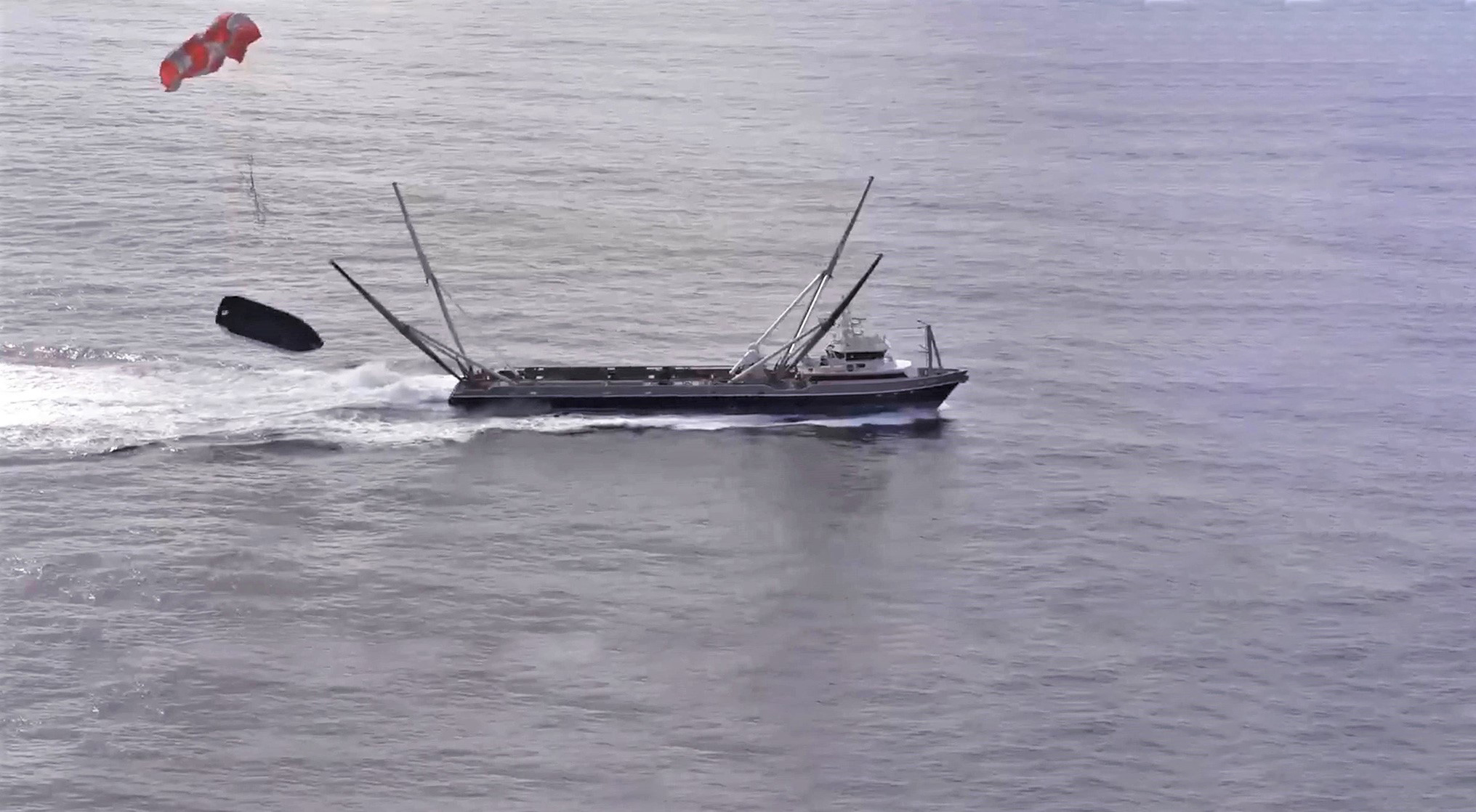
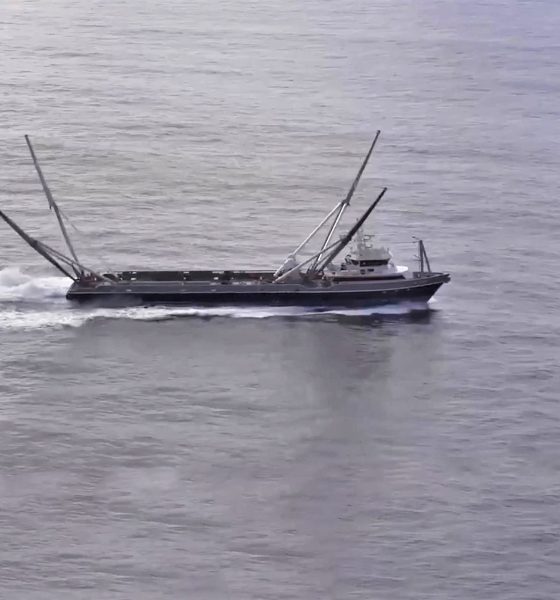
News
SpaceX’s Mr. Steven barely misses Falcon 9 fairing catch in latest video
Shortly after the ship departed for the East Coast, SpaceX shared a video of one of recovery vessel Mr. Steven’s recent controlled catch tests, in which he came so close to a successful fairing recovery that his net actually bumped the nose of the fairing before it tipped over and fell into the ocean.
While agonizing to watch a fairing very literally slip through Mr. Steven’s figurative fingers, this video is primarily good news. Given how extraordinarily close Mr. Steven was to success, SpaceX engineers will almost certainly continue refining their fairing recovery technique and technology until successful catches can be reliably repeated.
One of Mr. Steven’s final West Coast fairing recovery tests before shipping out for the East Coast. Wait for it… pic.twitter.com/A7q37Gpllu
— SpaceX (@SpaceX) January 30, 2019
Over the past four or so months, SpaceX has engaged in a program of controlled Falcon fairing drop-and-catch tests around 100 miles (160 km) off the coast of California. Prior to today’s video, one additional update was released a few weeks ago showing a separate catch test that ended in a similar but slightly bigger miss. The test shown in the new video likely occurred a few weeks ago, the second to last controlled experiment before Mr. Steven departed for Florida on the 28th. In fact, Teslarati photographer Pauline Acalin captured what is almost certainly the fairing half shown in SpaceX’s Jan 29 video, visibly cracking after impacting the ocean nose-on.
Oddly, this latest documented miss may have been caused by Mr. Steven going too fast, whereas all previous failures seem to have been more a consequence of being in the wrong place at the wrong time or unable to turn hard or fast enough to intercept the fairing half. Given that the fairing visibly touched down on the net before tilting back into the ocean, the half’s center of gravity must have been feet – if not inches – away from allowing it to tip the opposite direction and slide gently into Mr. Steven’s net. Had the ship been slowed down even a little, the story of this test may have been completely different. Nevertheless, the gap between failure and success is clearly smaller than ever before, meaning that it can probably be all but guaranteed that SpaceX will eventually close that gap on fairing recovery.
- Once its parafoil is deployed, the floating Falcon fairing looks quite minimalist and elegant. (SpaceX)
- So close 🙁 (SpaceX)
- The fairing half from this attempt suffered a clear crack on the right-hand side of its nose. (SpaceX)
- SpaceX has used a number of fairing halves during its recent controlled catch attempts. (Pauline Acalin, 1/22/19)
- This half, however, bears a striking resemblance to the half pictured in SpaceX’s latest video, particularly with respect to the damage on the right side of its nose. (Pauline Acalin, 01/22/19)
Soon to be stationed with SpaceX’s Florida-based East Coast recovery fleet, Mr. Steven should see a considerable uptick in the number of available fairing recovery attempts, with at least three new post-launch catch opportunities to come in the next two or three months. The SpaceX recovery vessel departed SpaceX’s Port of San Pedro berth on the evening of January 28th and is likely to cross the Panama Canal within a week and arrive at Port Canaveral approximately a week after that. SpaceX’s next East Coast launch is scheduled for no earlier than (NET) February 18th (8:58pm EDT), giving Mr. Steven plenty of time to switch coasts and attempt a recovery.

News
Nvidia CEO Jensen Huang explains difference between Tesla FSD and Alpamayo
“Tesla’s FSD stack is completely world-class,” the Nvidia CEO said.

NVIDIA CEO Jensen Huang has offered high praise for Tesla’s Full Self-Driving (FSD) system during a Q&A at CES 2026, calling it “world-class” and “state-of-the-art” in design, training, and performance.
More importantly, he also shared some insights about the key differences between FSD and Nvidia’s recently announced Alpamayo system.
Jensen Huang’s praise for Tesla FSD
Nvidia made headlines at CES following its announcement of Alpamayo, which uses artificial intelligence to accelerate the development of autonomous driving solutions. Due to its focus on AI, many started speculating that Alpamayo would be a direct rival to FSD. This was somewhat addressed by Elon Musk, who predicted that “they will find that it’s easy to get to 99% and then super hard to solve the long tail of the distribution.”
During his Q&A, Nvidia CEO Jensen Huang was asked about the difference between FSD and Alpamayo. His response was extensive:
“Tesla’s FSD stack is completely world-class. They’ve been working on it for quite some time. It’s world-class not only in the number of miles it’s accumulated, but in the way it’s designed, the way they do training, data collection, curation, synthetic data generation, and all of their simulation technologies.
“Of course, the latest generation is end-to-end Full Self-Driving—meaning it’s one large model trained end to end. And so… Elon’s AD system is, in every way, 100% state-of-the-art. I’m really quite impressed by the technology. I have it, and I drive it in our house, and it works incredibly well,” the Nvidia CEO said.
Nvidia’s platform approach vs Tesla’s integration
Huang also stated that Nvidia’s Alpamayo system was built around a fundamentally different philosophy from Tesla’s. Rather than developing self-driving cars itself, Nvidia supplies the full autonomous technology stack for other companies to use.
“Nvidia doesn’t build self-driving cars. We build the full stack so others can,” Huang said, explaining that Nvidia provides separate systems for training, simulation, and in-vehicle computing, all supported by shared software.
He added that customers can adopt as much or as little of the platform as they need, noting that Nvidia works across the industry, including with Tesla on training systems and companies like Waymo, XPeng, and Nuro on vehicle computing.
“So our system is really quite pervasive because we’re a technology platform provider. That’s the primary difference. There’s no question in our mind that, of the billion cars on the road today, in another 10 years’ time, hundreds of millions of them will have great autonomous capability. This is likely one of the largest, fastest-growing technology industries over the next decade.”
He also emphasized Nvidia’s open approach, saying the company open-sources its models and helps partners train their own systems. “We’re not a self-driving car company. We’re enabling the autonomous industry,” Huang said.
Elon Musk
Elon Musk confirms xAI’s purchase of five 380 MW natural gas turbines
The deal, which was confirmed by Musk on X, highlights xAI’s effort to aggressively scale its operations.

xAI, Elon Musk’s artificial intelligence startup, has purchased five additional 380 MW natural gas turbines from South Korea’s Doosan Enerbility to power its growing supercomputer clusters.
The deal, which was confirmed by Musk on X, highlights xAI’s effort to aggressively scale its operations.
xAI’s turbine deal details
News of xAI’s new turbines was shared on social media platform X, with user @SemiAnalysis_ stating that the turbines were produced by South Korea’s Doosan Enerbility. As noted in an Asian Business Daily report, Doosan Enerbility announced last October that it signed a contract to supply two 380 MW gas turbines for a major U.S. tech company. Doosan later noted in December that it secured an order for three more 380 MW gas turbines.
As per the X user, the gas turbines would power an additional 600,000+ GB200 NVL72 equivalent size cluster. This should make xAI’s facilities among the largest in the world. In a reply, Elon Musk confirmed that xAI did purchase the turbines. “True,” Musk wrote in a post on X.
xAI’s ambitions
Recent reports have indicated that xAI closed an upsized $20 billion Series E funding round, exceeding the initial $15 billion target to fuel rapid infrastructure scaling and AI product development. The funding, as per the AI startup, “will accelerate our world-leading infrastructure buildout, enable the rapid development and deployment of transformative AI products.”
The company also teased the rollout of its upcoming frontier AI model. “Looking ahead, Grok 5 is currently in training, and we are focused on launching innovative new consumer and enterprise products that harness the power of Grok, Colossus, and 𝕏 to transform how we live, work, and play,” xAI wrote in a post on its website.
Elon Musk
Elon Musk’s xAI closes upsized $20B Series E funding round
xAI announced the investment round in a post on its official website.

xAI has closed an upsized $20 billion Series E funding round, exceeding the initial $15 billion target to fuel rapid infrastructure scaling and AI product development.
xAI announced the investment round in a post on its official website.
A $20 billion Series E round
As noted by the artificial intelligence startup in its post, the Series E funding round attracted a diverse group of investors, including Valor Equity Partners, Stepstone Group, Fidelity Management & Research Company, Qatar Investment Authority, MGX, and Baron Capital Group, among others.
Strategic partners NVIDIA and Cisco Investments also continued support for building the world’s largest GPU clusters.
As xAI stated, “This financing will accelerate our world-leading infrastructure buildout, enable the rapid development and deployment of transformative AI products reaching billions of users, and fuel groundbreaking research advancing xAI’s core mission: Understanding the Universe.”
xAI’s core mission
Th Series E funding builds on xAI’s previous rounds, powering Grok advancements and massive compute expansions like the Memphis supercluster. The upsized demand reflects growing recognition of xAI’s potential in frontier AI.
xAI also highlighted several of its breakthroughs in 2025, from the buildout of Colossus I and II, which ended with over 1 million H100 GPU equivalents, and the rollout of the Grok 4 Series, Grok Voice, and Grok Imagine, among others. The company also confirmed that work is already underway to train the flagship large language model’s next iteration, Grok 5.
“Looking ahead, Grok 5 is currently in training, and we are focused on launching innovative new consumer and enterprise products that harness the power of Grok, Colossus, and 𝕏 to transform how we live, work, and play,” xAI wrote.
